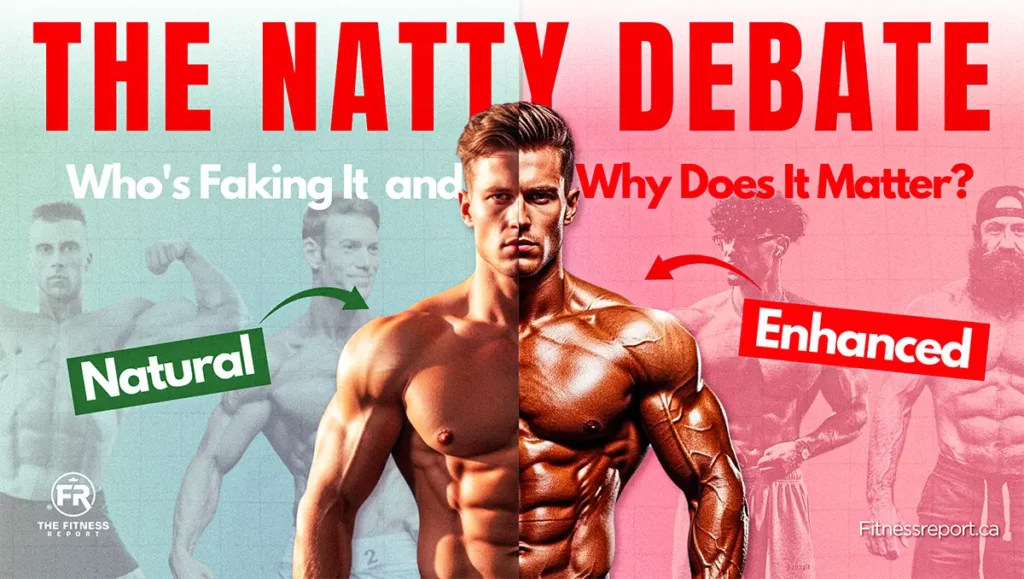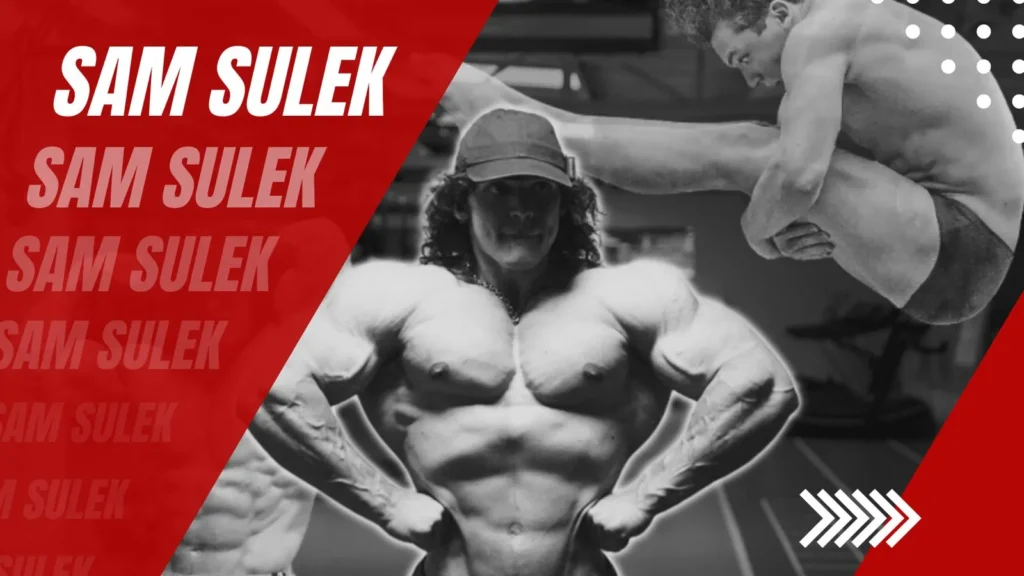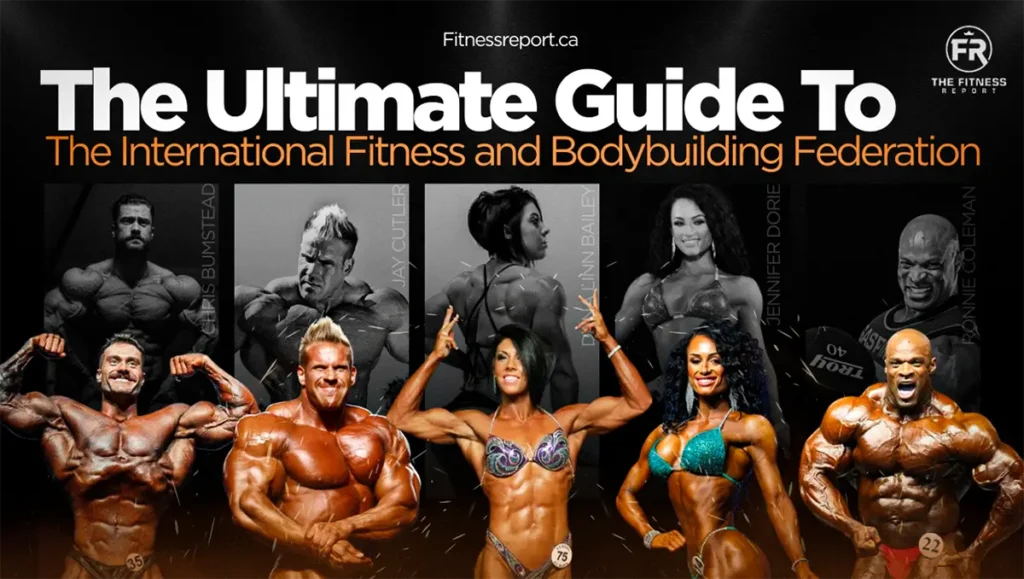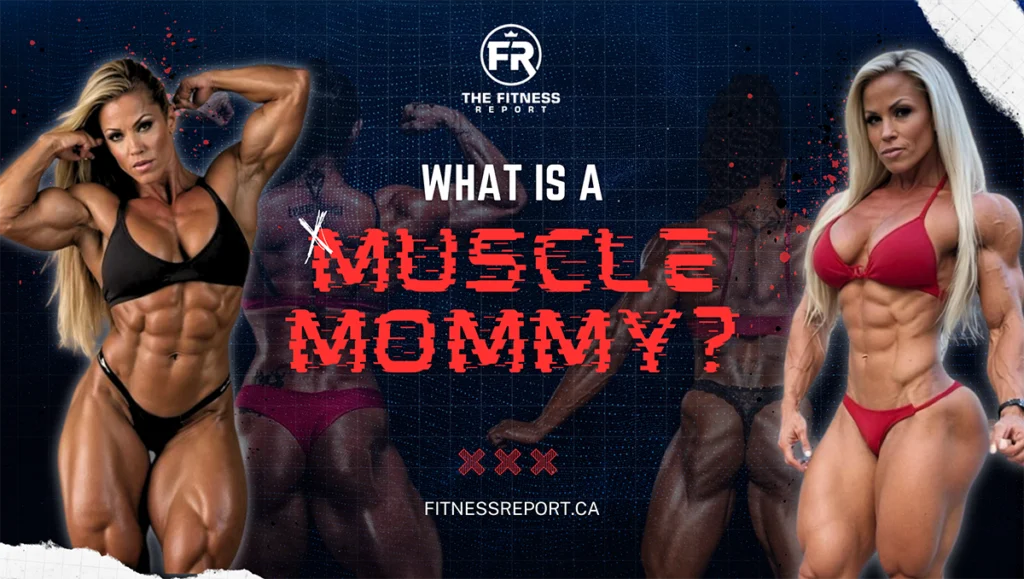The Natty Debate: What It Means, Who’s Faking It, and Why It Matters
- Natty Meaning In Bodybuilding
- What Does “Natty” Mean in Bodybuilding & Fitness?
- Why the Label Matters
- How “Natty” Is Evaluated
- The Rise of Fake Natties
- Notable Suspected Fake Natties
- The Psychology Behind Fake Natties
- Why Are Fake Natties a Problem?
- Why the Debate Matters to More than Just Bodybuilders
- Is Using PEDs Intrinsically Wrong?
- The Fake Natty Conclusion
- The Natty Debate: Frequently Asked Questions
Natty Meaning In Bodybuilding
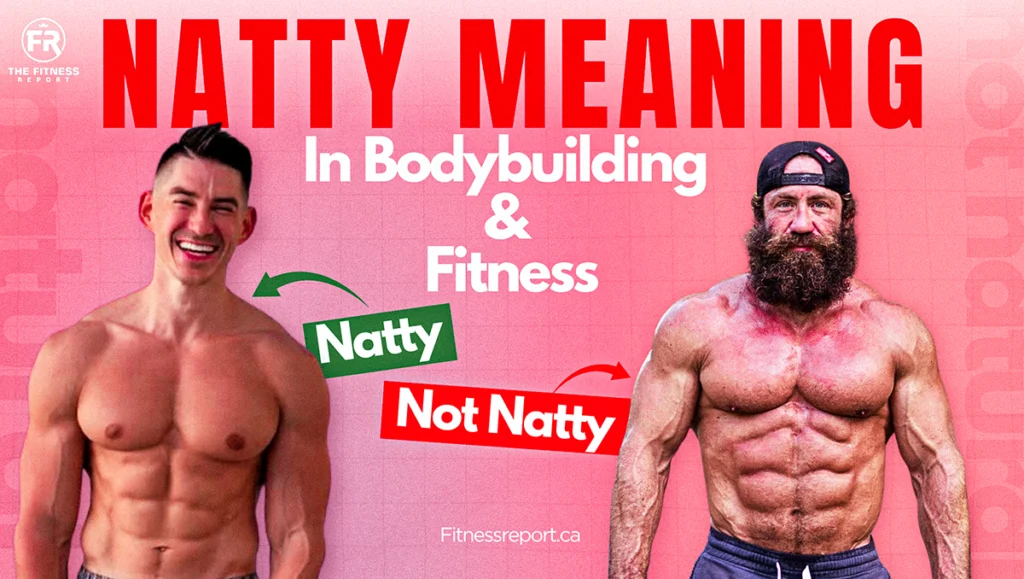
In the world of bodybuilding and fitness, the phrase natty, meaning natural, carries significant implications. To be “natty” is to claim that one’s physique results solely from training, diet, rest, and genetics, entirely free from performance-enhancing drugs (PEDs) such as anabolic steroids, peptides, testosterone replacement therapy (TRT), or human growth hormone (HGH).
At first glance, the concept seems simple. Either you are natural or you are not. But within the modern fitness industry, where social media influencers command millions of followers and entire businesses are built on image, the line between natural and enhanced has become increasingly blurred.
This is where the idea of the fake natty comes in. A fake natty is someone who claims to be natural yet appears to have a physique that raises serious questions. They might insist their results are the outcome of hard work and disciplined dieting alone, while at the same time benefiting from steroids or other PEDs behind the scenes. To their audiences, often young gym-goers searching for inspiration, this can set a dangerous precedent.
The problem goes beyond individual choices. When influencers with massive following blur the truth, they distort expectations for what the human body can achieve naturally. These figures do not just post workout videos, they frequently sell coaching programs, supplements, and lifestyle advice built on a foundation that is not entirely honest. It creates a cycle of frustration, self-doubt, and, in some cases, unhealthy decisions by those who try to replicate results that are simply not possible without enhancements.
In this article, we’ll explore what “natty” truly means, what sets apart fake natties, and why this distinction matters more than ever in today’s fitness culture.
What Does “Natty” Mean in Bodybuilding & Fitness?
The term “natty” originates from bodybuilding slang. It refers to individuals who build their physique through training, diet, and lifestyle factors alone. Without synthetic PEDs.
On the other hand, “not natty” signifies the usage of substances like anabolic steroids, growth hormones, or substances that fundamentally alter muscle growth or recovery.
Natural physiques are typically characterized by:
- Moderate-to-high muscle mass, but without extreme striations or vascularity.
- Lean yet not ripped. Holding sub-10% body fat sporadically, not year-round.
- Progress over years, with plateaus, setbacks, and natural progression curves.
Social media, however, often distorts this by showcasing peak-condition images. Taken under ideal lighting and after dehydration they are published as though they represent everyday reality. Thus, claims of being “natty” shape credibility and marketing appeal, making authenticity increasingly valuable and exploited.
The “Half Natty” Concept
“Half natty” is an ambiguous, informal term. It may refer to:
- Individuals who previously used PEDs but currently claim to be drug-free.
- Those whose physique appears at the upper edge of natural possibility without being clearly enhanced.
Both interpretations are speculative and often misused by audiences searching for a gray area. It adds confusion rather than clarity to ongoing debates.
Why the Label Matters
Being labeled “natty” positions content creators as aspirational yet relatable. It promises that what you see is achievable through effort. Not manipulation. The claim can make or break credibility, especially when marketing fitness programs or supplements.
Unscrupulous claims raise ethical concerns by fueling reckless body ideals and undermining genuine natural athletes. A clear understanding of the term is important for preserving honesty and realistic expectations within the fitness community.
How “Natty” Is Evaluated
Determining whether someone is truly natural is far from straightforward, but several evaluative methods exist.
From a physiological perspective, experts analyze muscle size, leanness, and overall proportions. The concept of “FFMI” (Fat-Free Mass Index) is often applied, with scores above 25 generally considered unattainable without assistance. While not a perfect measure, it provides a statistical benchmark. Several practical limitations apply to this method:
- Measurement accuracy: FFMI is only as accurate as your body fat data. Skinfold caliper estimates, hydration levels, or scale error can skew the inputs.
- Body frame factors: Taller individuals or those with dense bone structure naturally have recalibrated FFMI results. Height-normalized formulas attempt to account for this, but discrepancies remain.
- Individual variation: Outliers with extraordinary genetics or training regimes might exceed textbook limits. Though such cases remain rare.
In competitive bodybuilding and powerlifting, federations employ drug testing to ensure compliance with natural status. However, the reliability of these tests can vary. Some organizations use polygraph examinations alongside urinalysis, while others rely on random testing schedules.
Unfortunately, advances in drug protocols and “cycling off” techniques mean that athletes can sometimes avoid detection, which perpetuates skepticism around even officially “natural” competitors.
Outside of formal settings, evaluation is based on visible markers: extreme vascularity, disproportionate muscle growth, or rapid changes in size and strength. Trainers and experienced athletes often rely on intuition combined with knowledge of human physiology to make judgments.
Ultimately, evaluation rests on both scientific and cultural standards. Science seeks measurable thresholds, while culture weighs authenticity, transparency, and honesty. The two approaches often clash, making the debate around “natty” status an ongoing and polarizing issue.
The Rise of Fake Natties
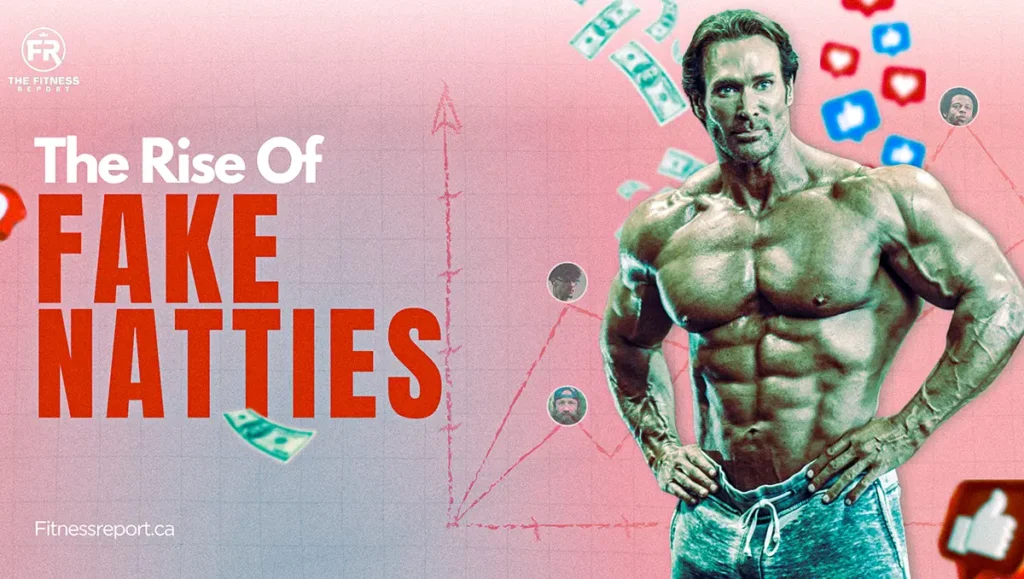
Fake natties are individuals whose exceptional physiques are widely regarded as unlikely to be achieved naturally, yet they continue to claim a natural status. This claim is powerful, as it suggests that what we see is attainable through effort alone, without any assistance from drugs. Influencers in this category often enjoy substantial followings, monetize via supplement lines or coaching services, and benefit from the aspirational allure of authenticity.
Reverse Fake Natty
At the opposite end of the spectrum are reverse fake natties, and this one is wild to me 😂. Sometimes individuals declare steroid use even though it is doubtful that they ever used such substances in the first place. There was one fitness influencer on TikTok who had a decent physique and had some signs of steroid use (acne all over) and claimed to be using. He was actually natural the entire time.
I believe he wanted all the attention others get when they start using PEDs as a teenager or young adult.
Both phenomena thrive partly because social media minimizes complexity. A quick post with an impressive physique can mask augmentation.
Why Fake Natties Proliferate
Fake natties proliferate for a number of reasons.
- Social media aesthetics: Filters and expert photography can mask imperfections, making enhanced physiques seem natural.
- Monetization: Declaring natural status makes supplements, coaching programs, and ads more persuasive.
- Psychological appeal: Many want stories of hard work and authenticity. Fake natties deliver that illusion.
- Cultural stigma: Steroids are demonized, so people hide use to avoid critique. Even among followers who suspect otherwise.
This culture fosters unrealistic expectations. Followers may dangerously push themselves toward extreme regimens or contemplate risky PED use. Ultimately, repeated deception erodes trust. Not only in individual influencers but in fitness culture at large.
Notable Suspected Fake Natties
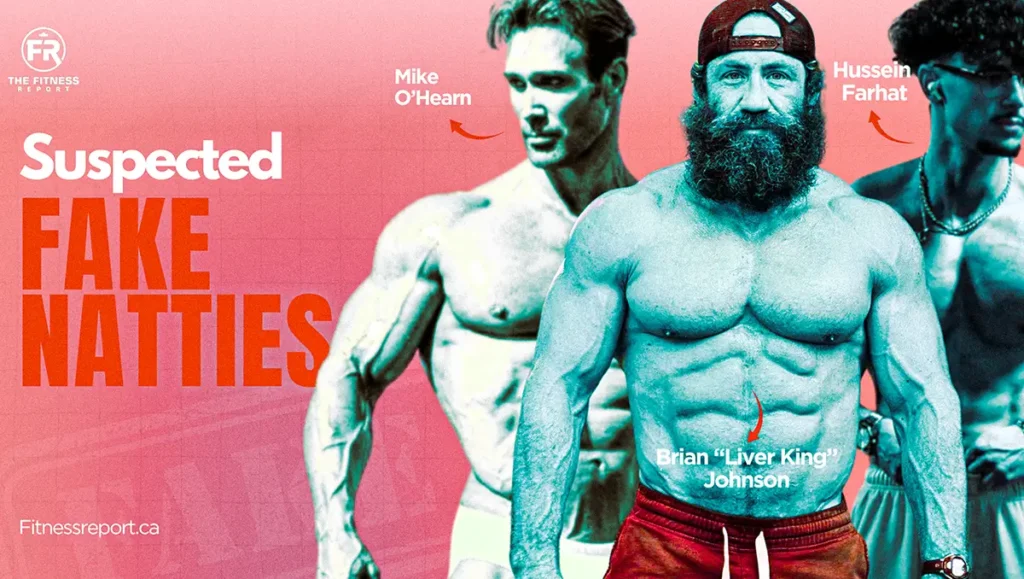
Below are formal profiles of prominent figures often suspected or presumed to be fake natties. Each profile is based on media analysis, public records, or credible leaked information. Not conclusive proof.
Brian “Liver King” Johnson
Brian Johnson, known on social media as the Liver King, garnered massive attention for promoting an “ancestral lifestyle” involving raw organ-meat consumption and extreme physical rituals. He claimed his muscular physique was achieved naturally and gained over six million followers. Alongside, he also built a supplement empire reportedly generating over $100 million annually.
In late 2022, leaked emails revealed he spent approximately $11,000 per month on steroids and human growth hormone, prompting a public confession in which he admitted to misleading his followers. The Netflix documentary Untold: The Liver King (May 2025) chronicles his rise and fall, exploring his marketing tactics, psychological vulnerabilities, and continued business endeavors despite the scandal.
Hussein Farhat
Hussein Farhat is an online coach and fitness influencer who has a very insane physique and apparently made all of his gains within his first few years of training (he also gained 60 pounds of lean muscle in 18 moths). Many had thought that he was probably using steroids to make these serious gains and he even did a video with Jeff Nippard who backed his natural status. This made Jeff look like a fool and damaged his reputation.
It turns out Hussein was just another Fake Natty as he used multiple different substances at the beginning of his career for 16 months.
Here are the special supplements Hussein was using:
- 300 mg of Equipoise
- 300 mg of Testosterone
- 300 mg of Masteron
- Anavar
- MK-677
At this current moment, besides The Liver King, there is no bigger Fake Natty than Hussein Farhat. If you want to see all the backlash, go look at the comment section on his YouTube channel.
Mike O’Hearn
Mike O’Hearn is a long-standing figure in the fitness world, often referred to as the “God of Natural Bodybuilding.” He consistently claims natural status, citing extensive drug testing ranging from polygraphs to NBC-mandated screenings during “American Gladiators” that have never detected banned substances.
In interviews with fitness influencers like Kenny KO, O’Hearn attributes his physique to carbohydrates and lifelong training. Though skeptics point to his size and condition well into his 50s as unusually maintained for a natural athlete. Critics such as Greg Doucette and many others voice skepticism through social platforms but there is no proof to challenge his claims.
Simeon Panda
Simeon Panda is a globally recognized fitness influencer known for his impressive symmetry and conditioning. He has never publicly admitted to PED use, but many in the fitness community question whether his proportions and sustained leanness are natural. As discussions escalate, his physique continues to invite scrutiny amid broader debates about fitness authenticity.
Jeff Seid
Jeff Seid rose to fame as a teenage fitness model. He achieved a shredded and highly aesthetic physique while still very young. Observers argue that maintaining such a condition year-round appears improbable without chemical assistance, fueling suspicion of PED use as he remained prominent into adulthood.
David Laid
David Laid gained massive popularity through transformation videos on YouTube. While he credits training and nutrition for his physique, critics question whether the dramatic nature and timelines of his changes align with natural limits. Skepticism derives from the intensity and completeness of his shifts, often viewed as unrealistic for pure natural progression.
Alex Eubank
Alex Eubank presents himself as a fitness influencer and coach, but recent community conversations suggest his “natural” claims may have changed over time. Discussion threads claim that he is “no longer natty,” raising doubt about previous portrayals and prompting calls for transparency.
Tristyn Lee
Tristan Lee frequently posts transformation content showcasing extreme leanness and muscularity attained over relatively short periods. These dramatic changes have attracted skepticism within fitness forums, with many arguing that achieving such conditioning for extended periods is unattainable naturally.
Sean Michael (Shizzy)
Sean Michael, known online as Shizzy, is another figure whose muscular frame and social-media presence spark concern. Some community members argue that his physique is beyond plausible natural limits, raising ongoing questions about his claims of being genuine.
The Psychology Behind Fake Natties
The psychology of athletes who present themselves as “natural” despite using performance-enhancing substances is a complex issue that combines ego, financial incentives, and social validation. Many of these athletes have built a public identity on the premise of discipline, genetics, and hard work.
Admitting the use of anabolic steroids or other drugs undermines this narrative and threatens their credibility. For some, deception becomes a defense mechanism to preserve status in an industry that heavily rewards physical aesthetics.
The psychological drivers can also be tied to parasocial relationships. Followers and fans invest emotionally in influencers, seeing them as role models. Athletes who are not transparent about enhancement use fear of losing admiration and sponsorships. This creates cognitive dissonance. Meaning they reconcile the dishonesty by emphasizing their “work ethic” or suggesting that supplementation is limited to “legal” products.
There is often an element of superiority involved. Individuals may take pride in fooling the public, interpreting their ability to maintain a believable façade as a form of intelligence or skill.
In addition, pressures related to body dysmorphia, competition, and comparison culture fuel these decisions. Many who resort to faking natty status do so not solely for financial gain but because they fear irrelevance if their natural limits cannot compete with enhanced peers. This psychological loop reinforces the culture of dishonesty that surrounds the fitness world.
Why Are Fake Natties a Problem?
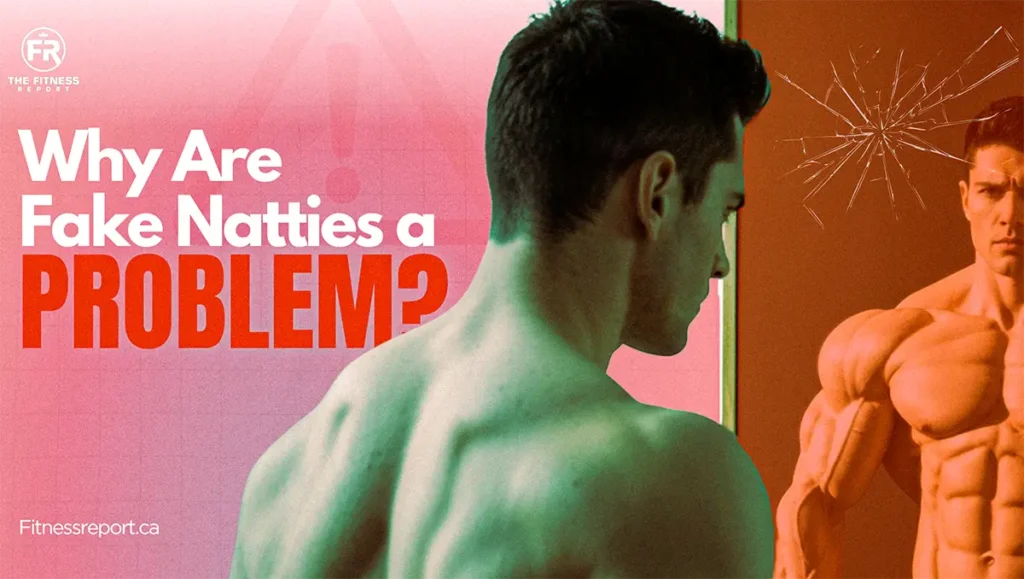
Fake natties cause problems in the following ways:
1. Spreading Misinformation
Fake natties misinform followers into believing that stratospheric physiques are achievable naturally. Often without acknowledging enhancements, special lighting, tanning, or temporary dehydration. This deliberate misrepresentation undermines informed fitness pursuits.
2. Fostering Unrealistic Expectations
When individuals compare themselves to seemingly natural physiques that are likely enhanced, they risk chronic dissatisfaction. This can escalate into body dysmorphia, overtraining, or dangerous behaviors.
A recent exposé in The Guardian links such portrayals to rising body image issues among social media users, especially young males, who internalize unattainable metrics of fitness and masculinity.
3. Exploitative Monetization
Fake natties often monetize via supplements or coaching, selling access to the very physique they misrepresent. Consumers pay for a dream built on false premises, creating ethical and financial concerns.
4. Erosion of Trust in Fitness Culture
Exposures like the Liver King scandal contribute to dwindling credibility in the fitness influencer sphere. When audiences believe that nearly everyone is doping, respect for legitimate natural athletes diminishes.
5. Ethical Responsibility
In any community built on aspiration and education, honesty is foundational. Misleading claims damage not only the individual’s integrity but also the broader fitness industry.
Why the Debate Matters to More than Just Bodybuilders
At first glance, one might assume that the natty debate matters only to competitive bodybuilders or hardcore fitness enthusiasts. In reality, its impact is far broader. Fitness influencers dominate social media spaces, where their audiences include millions of everyday people seeking guidance on health and wellness.
When these figures misrepresent themselves, they contribute to widespread misconceptions about what is achievable without enhancements. This fuels cycles of dissatisfaction, as individuals measure their progress against unrealistic benchmarks.
Moreover, the debate intersects with broader societal concerns, including the regulation of substances, the ethics of influencer marketing, and the psychology of self-image. Just as unrealistic beauty standards in fashion have drawn criticism for decades, the portrayal of “natty” physiques can distort public perceptions of health and fitness in damaging ways.
Is Using PEDs Intrinsically Wrong?
Using PED is not inherently unethical. Various individuals medically require hormone treatments, while others intentionally seek enhancement for aesthetic or athletic reasons. In many domains outside regulated sport, such use is neither illegal nor morally black-and-white.
The ethical issue arises when such use is concealed. Presenting enhanced results as natural violates trust, especially when paired with product endorsement or lifestyle branding. Transparency, rather than condemnation of PED use, supports a healthier dialogue.
Culturally, steroid exposure remains taboo, pressuring influencers into dishonest behavior. Exceptions like Rich Piana and Said Shavershian (Chestbrah) who openly spoke about steroid use demonstrated that honesty can preserve integrity, even at the cost of mass appeal.
Therefore, informed discussion, risk education, and clarity—not stigma—should drive conversation. The broader fitness community benefits when substance use is contextualized, not sensationalized or hidden.
The Fake Natty Conclusion
Understanding the natty meaning in fitness is critical in a landscape rife with visual deception. Fake natties erode trust, promote unrealistic goals, and contribute to unhealthy behaviors and cultural cynicism.
Critically, the issue is not enhancement itself but dishonesty. PED use should be judged within the frameworks of transparency and informed decision-making, not automatically condemned.
As consumers and creators in the fitness ecosystem, our responsibility includes questioning exaggerated claims, validating sources, and prioritizing health over aesthetics. Fitness should focus on sustainable progression rather than viral perfection. By demanding integrity and clarity from influencers, we affirm healthier standards for both mind and body.
The Natty Debate: Frequently Asked Questions
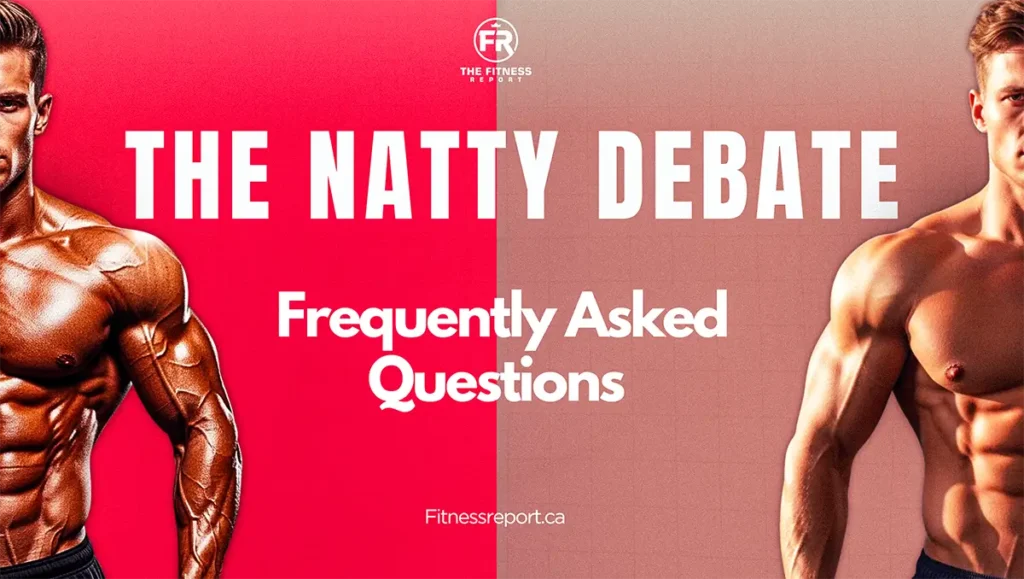
Other Gym Articles You May Like:
The Cheapest Gyms In Vancouver: Working Out On A Budget
Kelowna Gyms: Where To Workout
Nanaimo Gyms & Fitness Centers: Start Working Out Today!
Dawson Creek Gyms & Fitness Centres
The Ultimate Personal Training Guide
Is A Personal Trainer Worth It?
How To Become A Personal Trainer In British Columbia
How Much Do Personal Trainers Make In Canada
The Best Natural Bodybuilders In The World
Boulder Shoulder Workout: Get Huge Shoulders
Sam Sulek Bodybuilding: From YouTuber To IFBB Pro
Wes Watson: The Most Hated Fitness Guru
The Best Canadian Supplement Brands
Meal Prep Vancouver: The Top Rated Companies

